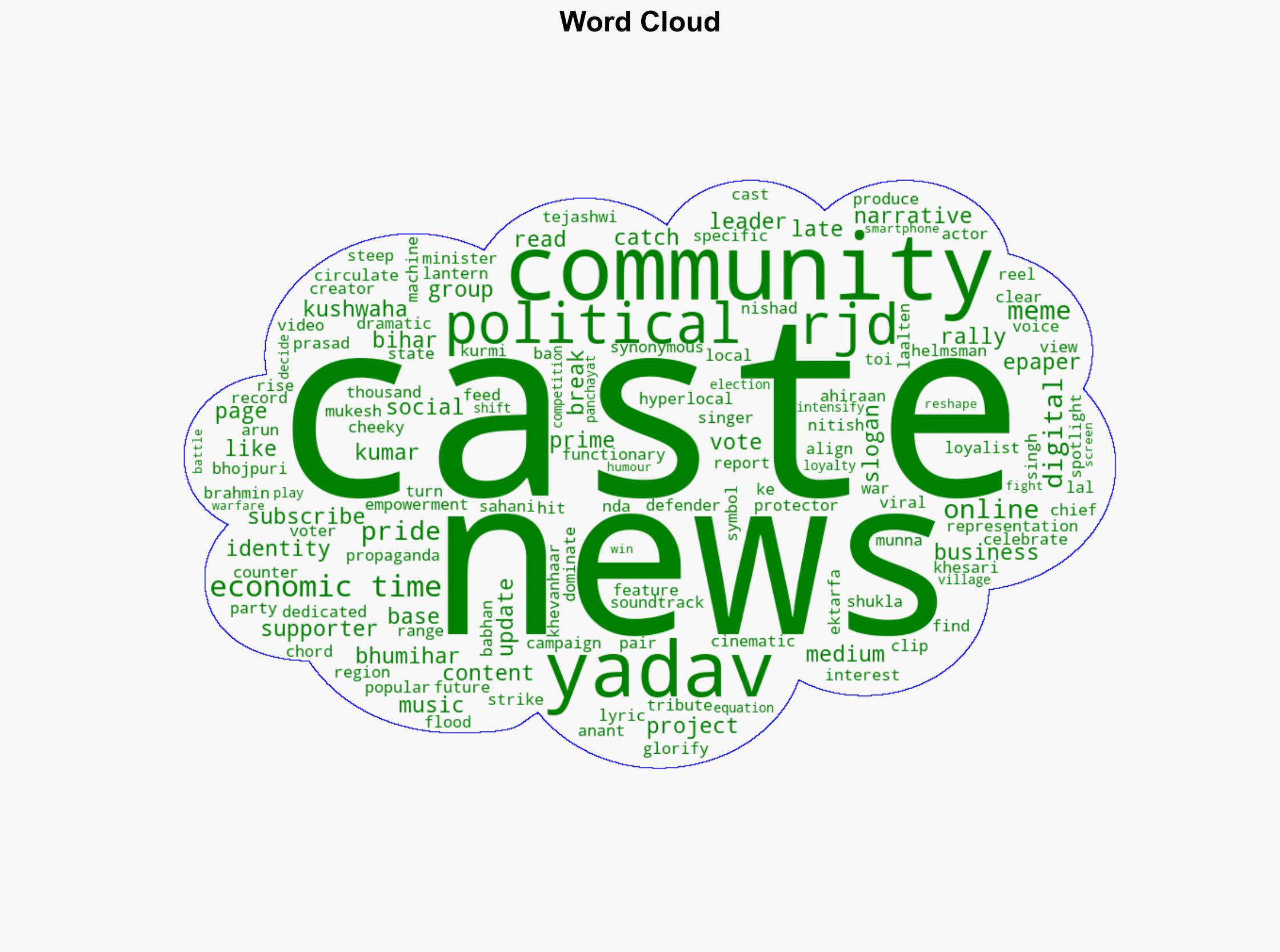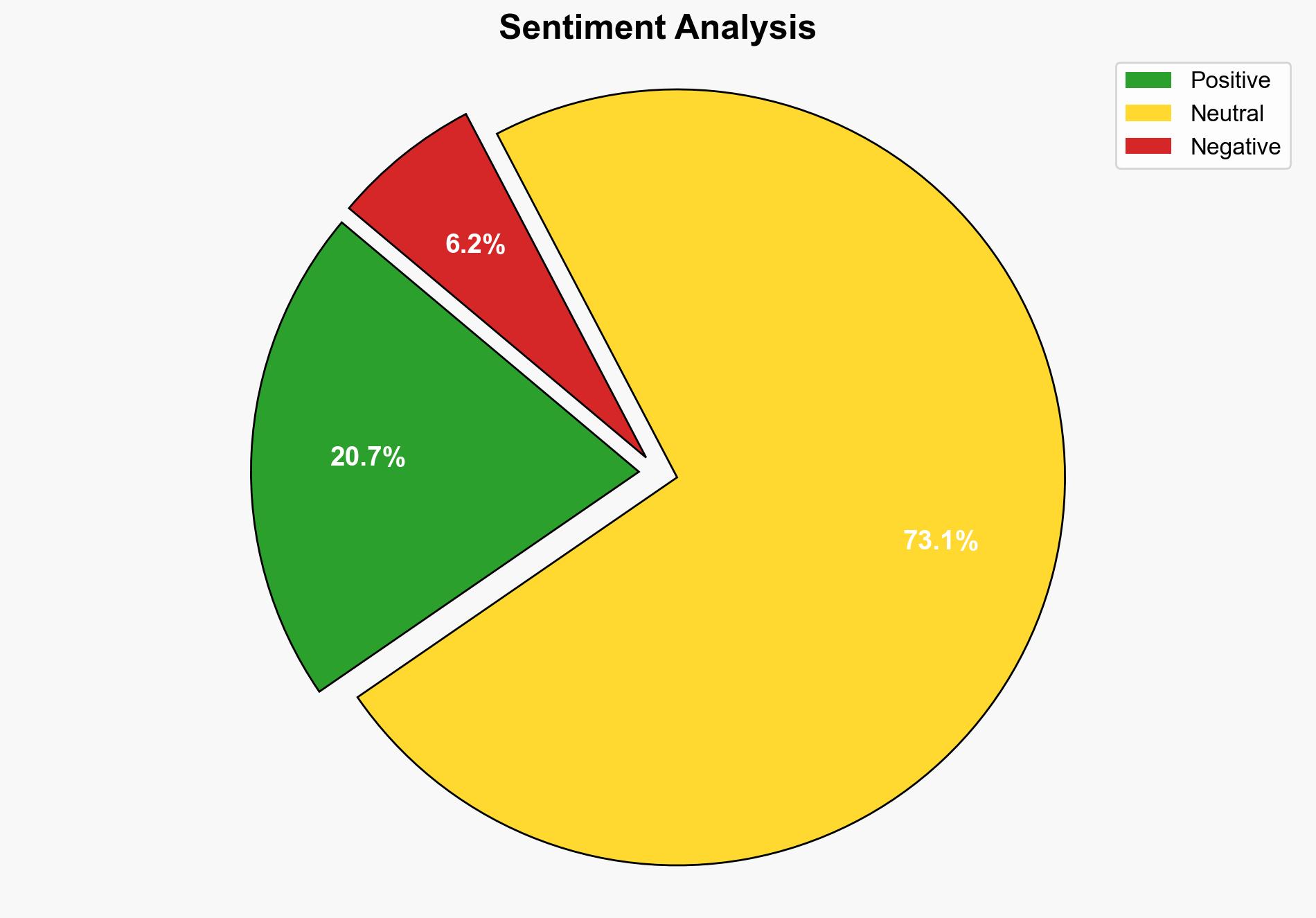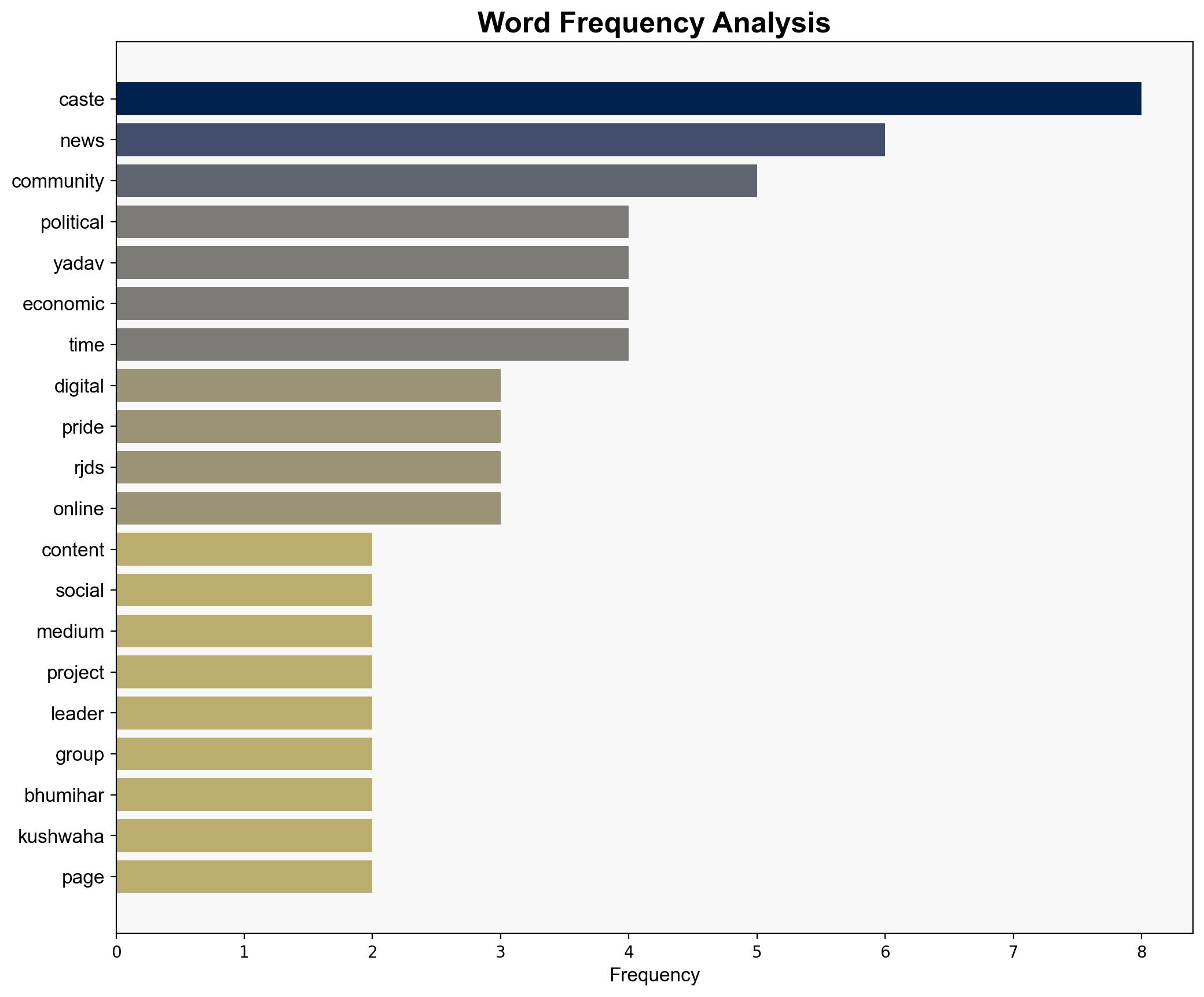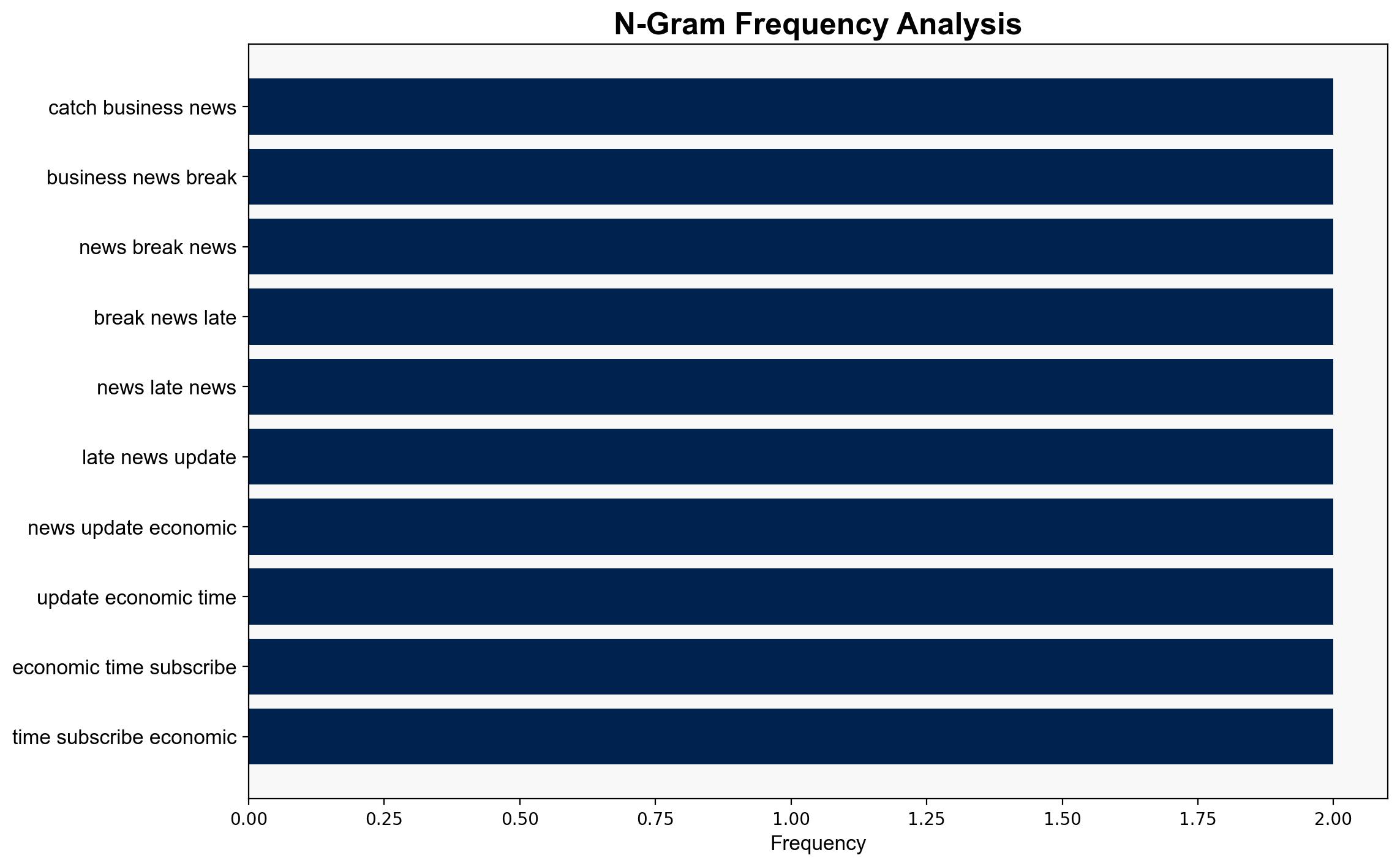Caste tunes and viral reels How Bihars politics plays out on social media – The Times of India
Published on: 2025-10-25
Intelligence Report: Caste tunes and viral reels How Bihar’s politics plays out on social media – The Times of India
1. BLUF (Bottom Line Up Front)
The strategic judgment is that social media is increasingly becoming a battleground for caste-based political influence in Bihar, with a high confidence level. The most supported hypothesis is that political parties are leveraging digital platforms to reinforce caste identities and influence voter behavior. Recommended action includes monitoring social media trends and counter-narratives to anticipate shifts in political alliances and voter sentiment.
2. Competing Hypotheses
Hypothesis 1: Political parties in Bihar are using social media to reinforce caste identities and influence voter behavior by promoting caste pride and community leaders.
Hypothesis 2: The rise of caste-based content on social media is primarily driven by grassroots movements and local influencers, independent of direct political party manipulation.
Using the Analysis of Competing Hypotheses (ACH) 2.0, Hypothesis 1 is better supported due to the presence of organized campaigns and the alignment of content with political party symbols and narratives. Hypothesis 2 lacks evidence of significant grassroots organization without political backing.
3. Key Assumptions and Red Flags
Assumptions include the belief that digital content directly influences voter behavior and that all viral content is politically motivated. A red flag is the potential overestimation of social media’s reach in rural areas with limited internet access. There is also a blind spot regarding the influence of external actors or misinformation campaigns.
4. Implications and Strategic Risks
The intensification of caste-based digital campaigns could exacerbate social divisions and lead to increased polarization. This may result in heightened tensions during elections, potentially escalating into offline conflicts. Economically, this could deter investment in regions perceived as unstable. Psychologically, it may entrench caste identities, reducing cross-community collaboration.
5. Recommendations and Outlook
- Monitor and analyze social media trends to identify emerging narratives and counter-narratives.
- Engage with community leaders to promote inclusive narratives that transcend caste divisions.
- Scenario-based projections:
- Best Case: Social media is used to foster inclusive political discourse, reducing caste tensions.
- Worst Case: Escalation of caste-based conflicts leading to violence and political instability.
- Most Likely: Continued use of social media for caste-based political campaigning, with moderate impact on voter behavior.
6. Key Individuals and Entities
Tejashwi Prasad Yadav, Khesari Lal Yadav, Anant Singh, Arun Kumar, Munna Shukla, Nitish Kumar, Mukesh Sahani.
7. Thematic Tags
national security threats, cybersecurity, counter-terrorism, regional focus





